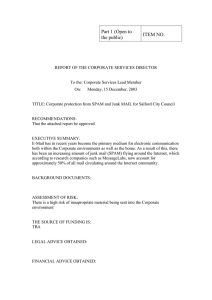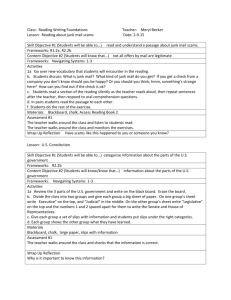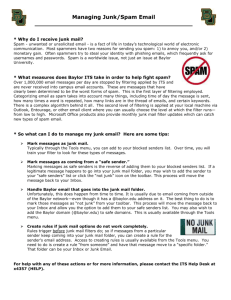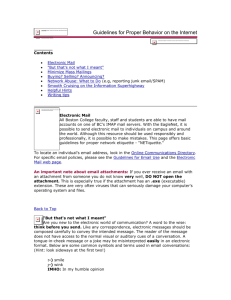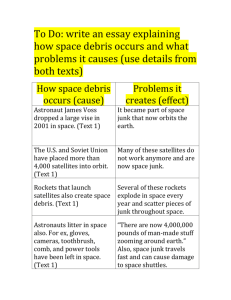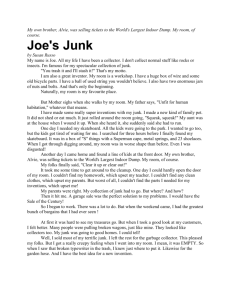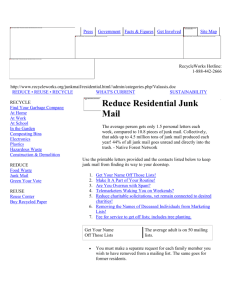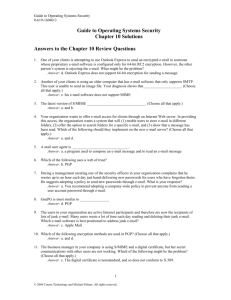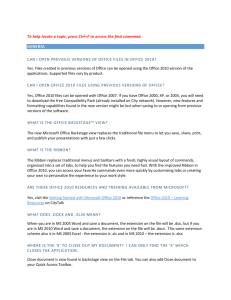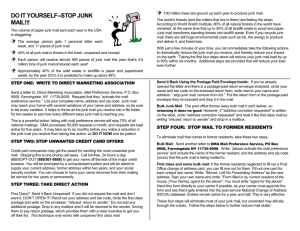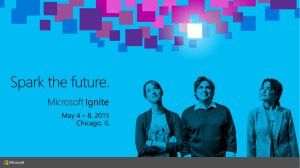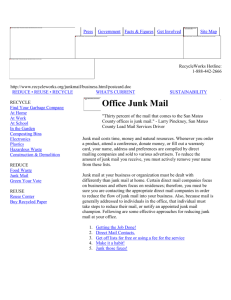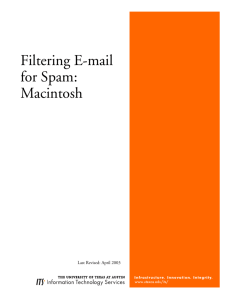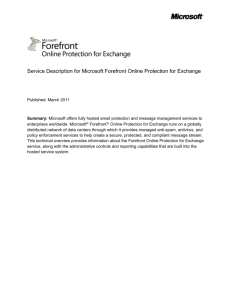Electronic Mail (E-M..
advertisement
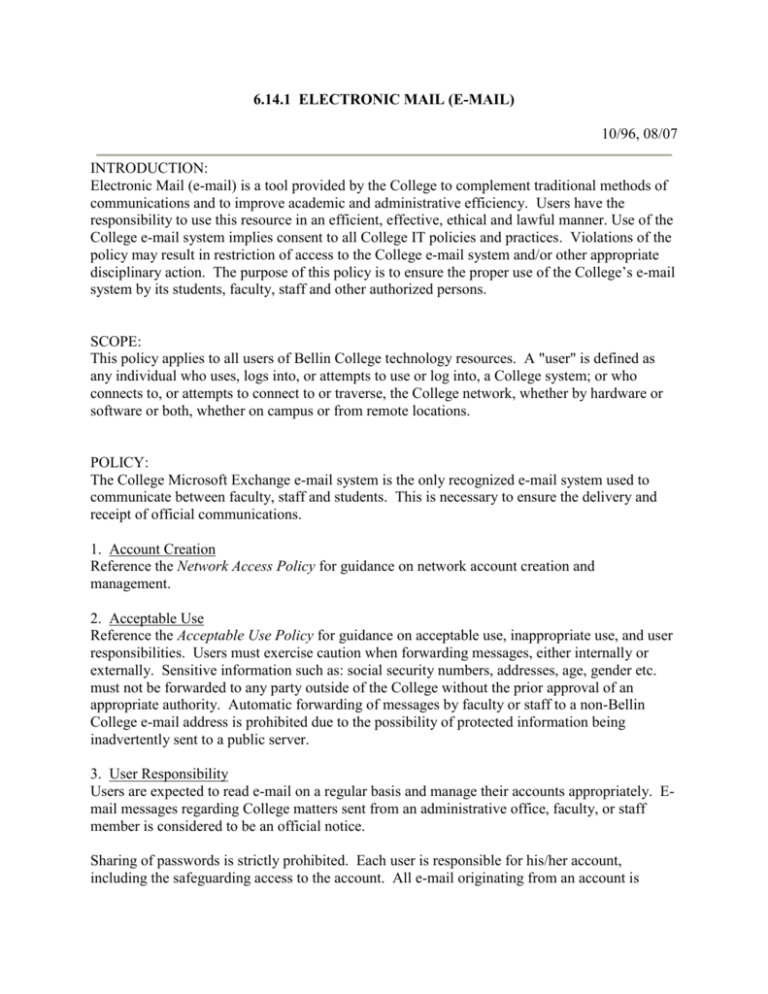
6.14.1 ELECTRONIC MAIL (E-MAIL) 10/96, 08/07 INTRODUCTION: Electronic Mail (e-mail) is a tool provided by the College to complement traditional methods of communications and to improve academic and administrative efficiency. Users have the responsibility to use this resource in an efficient, effective, ethical and lawful manner. Use of the College e-mail system implies consent to all College IT policies and practices. Violations of the policy may result in restriction of access to the College e-mail system and/or other appropriate disciplinary action. The purpose of this policy is to ensure the proper use of the College’s e-mail system by its students, faculty, staff and other authorized persons. SCOPE: This policy applies to all users of Bellin College technology resources. A "user" is defined as any individual who uses, logs into, or attempts to use or log into, a College system; or who connects to, or attempts to connect to or traverse, the College network, whether by hardware or software or both, whether on campus or from remote locations. POLICY: The College Microsoft Exchange e-mail system is the only recognized e-mail system used to communicate between faculty, staff and students. This is necessary to ensure the delivery and receipt of official communications. 1. Account Creation Reference the Network Access Policy for guidance on network account creation and management. 2. Acceptable Use Reference the Acceptable Use Policy for guidance on acceptable use, inappropriate use, and user responsibilities. Users must exercise caution when forwarding messages, either internally or externally. Sensitive information such as: social security numbers, addresses, age, gender etc. must not be forwarded to any party outside of the College without the prior approval of an appropriate authority. Automatic forwarding of messages by faculty or staff to a non-Bellin College e-mail address is prohibited due to the possibility of protected information being inadvertently sent to a public server. 3. User Responsibility Users are expected to read e-mail on a regular basis and manage their accounts appropriately. Email messages regarding College matters sent from an administrative office, faculty, or staff member is considered to be an official notice. Sharing of passwords is strictly prohibited. Each user is responsible for his/her account, including the safeguarding access to the account. All e-mail originating from an account is deemed to be authored by the account owner and it is the responsibility of that owner to ensure compliance with these guidelines. 4. Privacy The College will make every attempt to keep e-mail messages secure; however, privacy is not guaranteed and users should have no general expectation of privacy in e-mail messages sent through the College system. Users must be aware that e-mail can, depending on the technology, be forwarded, intercepted, printed, and stored by others. E-mail that is not encrypted can be viewed by people other than the intended recipient, while in transit or on mail servers. Because messages can be stored in backups, e-mail actually may be retrievable when a traditional paper letter would have been discarded or destroyed. 5. E-mail Etiquette When using e-mail as an official means of communication, users should apply the same professionalism, discretion and standards that they would use in written business communication. Furthermore, users should not communicate anything via e-mail they would not be prepared to say publicly. The following practices should be following when using e-mail: Use a meaningful subject line when sending a message Be concise and to the point Use proper spelling, grammar and punctuation Avoid abbreviations that the reader may not be familiar with Do not attach unnecessary files Use proper layout and structure Do not overuse the high priority option Use upper and lower case letters in your message. Messages typed in all upper case give the impression of shouting Be selective about recipients to avoid wasting people’s time. Use of distribution lists or ‘reply to all’ features of e-mail should be carefully considered and only used for legitimate purposes Read the e-mail before sending Only use delivery and read receipts when necessary 6. System Monitoring The College collects statistical data about its e-mail systems consistent with generally-accepted business practices. The College monitors the use of e-mail to ensure the ongoing availability, reliability, and security of the system. The College may employ, at any time, tools to analyze statistical information to detect unauthorized usage, denial of service attacks, capacity planning and network problems. Under certain circumstances, it may be necessary for the IT staff or other appropriate College officials to access e-mail files to maintain the system, to investigate security or abuse incidents, or violations of this or other College policies. Such access will be on an asneeded basis and any e-mail accessed will only be disclosed to those individuals with a need-toknow or as required by law. 7. Mailbox Size Limits Due to finite resources, the College has the right to restrict the amount of user space on the e- mail server as necessary and to revise the size restrictions as necessary with appropriate Administrative Council approval and advance notice. a. Administrative Officers – 1 GB b. Staff and Faculty – 500 MB c. Students – 100 MB 8. Records Retention A. Individuals are responsible for saving e-mail messages as they deem appropriate. Messages are automatically purged from folders as follows in order to save storage space: a. Inbox - 180 days b. Sent - 90 days c. Trash - 15 days d. Junk - 15 days B. Users are highly encouraged to utilize a .pst file to store messages beyond the time periods above. E-mail messages requiring retention in accordance with the College Records Retention policy should be printed and filed by the user as appropriate. 9. E-Mail Size Limits A 10 megabyte size restriction for all e-mail is enforced whether being sent or received. This is necessary to preserve network bandwidth and mailbox storage resources. 10. E-Mail Signature E-mail signatures indicating name, job title, address, contact info, and other particulars are strongly recommended for all e-mail messages whether sent to internal or external receivers. 11. Data Backup The e-mail system is NOT backed up on a regular basis due resource capabilities. This capability may be available in the future. 12. Organizational Accounts Shared organizational accounts can be created for those offices requiring shared access to a central mailbox to better support customer communications. 13. Supported Mail Clients Microsoft Outlook and Outlook Web Access (through Internet Explorer) are the officially supported methods for accessing e-mail. Use of an alternate method, such as the Outlook Express or OWA via Firefox or other Internet browser is not supported by the College. 14. Junk Mail & Virus Protection The College employs the following products to prevent junk e-mail (aka, spam mail) and virusinfected e-mail from user inboxes: Lightspeed Total Traffic Control – used to block known junk e-mail sources by domain or address and also scan incoming messages to identify and quarantine virus-infected messages; used to scan mailboxes on the server to identify and quarantine virus-infected messages; TTC agent is installed on each campus computer and server to identify and quarantine any virus-infected file; A spam mail summary is sent to all users receiving spam on a daily basis. Users can whitelist (always allow) and forward (deliver once) legitimate emails from their summary. Microsoft Intelligent Message Filter – used to filter junk e-mail from user inboxes Microsoft Outlook Junk E-Mail – a user tool to identify and block junk e-mail from your Inbox by sender or by applying a filter. Reference Microsoft Office Outlook Help for information on using the Junk E-Mail tool. It is impossible to guarantee protection against junk and virus-infected e-mail. You may also forward nuisance messages to spam@lightspeedsystems.com and spam@bellincollege.edu. Users should use proper care and actions to prevent the spread of viruses. Virus-infected e-mail often appears to be sent from a friend or coworker and will contain an attachment. This attachment is the virus carrier and, by opening the attachment, the virus code is executed. Attachments should be opened only when you are sure of the sender and message. Contact the Helpdesk if any doubt exists.
